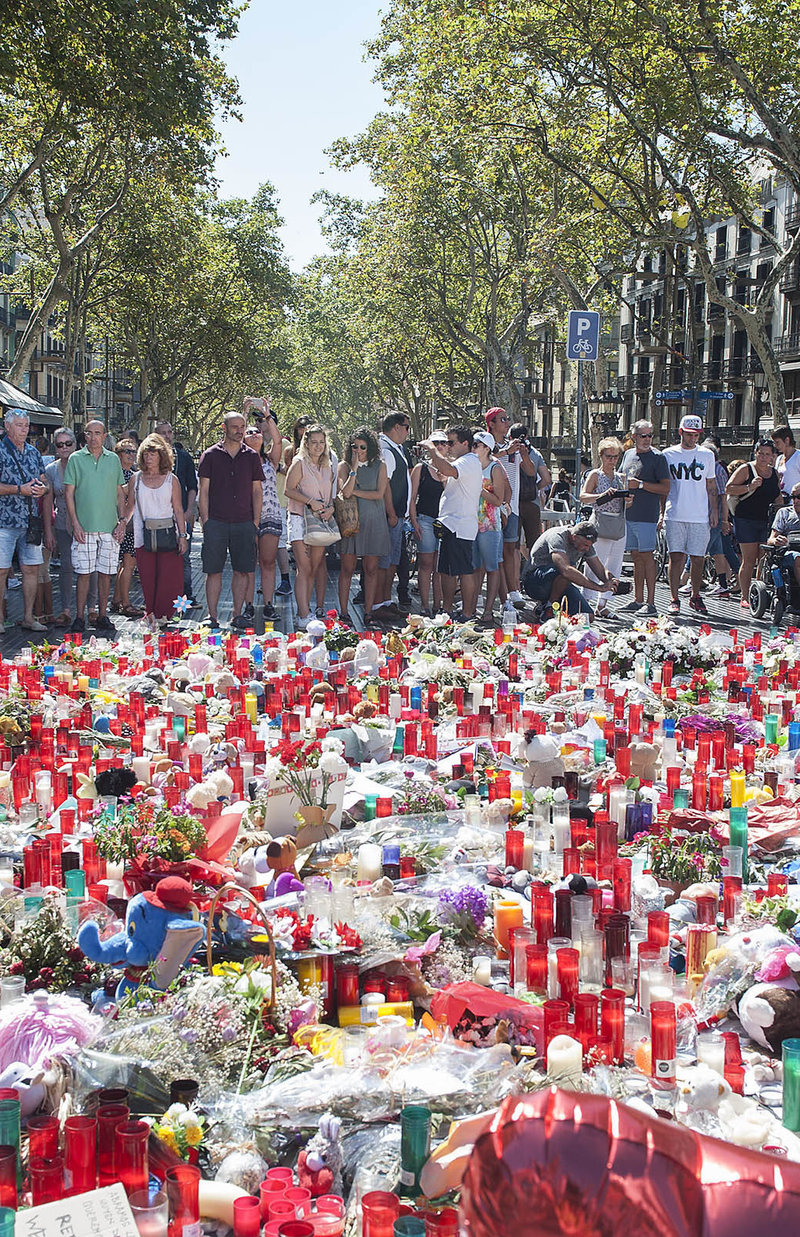opinion
In 1987, the crowds strolling along Las Ramblas were mainly citizens of Barcelona, curious about the few small groups of foreigners among them.
Last June, Barcelona commemorated the 30th anniversary of the last major terrorist attack the city had suffered. A bomb placed in the basement of a popular superstore, Hipercor, by ETA, the Basque terrorist group, killed 21 and left scores of other shoppers wounded. ETA terrorism was seen as a Spanish affair and the victims were all Spaniards.
Last Thursday, 30 years later, the city centre was hit by terror again. A similar number of casualties have been caused by the criminal act, only this time the victims were from 35 nationalities. These days ETA is mercifully inactive, terrorism is a global affair and Barcelona is one of the most cosmopolitan cities in Europe. No one was surprised at the number of foreign victims.
In 1987, the crowds strolling along Las Ramblas were mainly citizens of Barcelona, curious about the few small groups of foreigners among them. But Las Ramblas has been tourist territory for some years now and it is not so easy to spot the locals. Barcelona, the capital of Catalonia, is now one of the most interesting urban experiments, attempting to combine multiculturalism with a deeply rooted language and culture and accommodate them within the demands of globalisation.
Those born in the city and in other parts of Catalonia are acutely aware of belonging to an endangered species. Their mother tongue is a minority language within Spain and the national government does not fully represent them. The tradition of so-called Catalanism during the 20th century has been to project the idea of a modern society, open to the world and proud of the vibrant and dynamic life of its capital, a hub of cosmopolitism.
Catalonia has been the natural point of entry to Spain for invaders and travellers alike. Sitting between the Pyrenees and the Mediterranean, this north-eastern tip of the Spanish peninsula has been the bridge between Europe and the rest of Spain, and this geographical position has marked its residents. Under centralist or authoritarian drives coming from Madrid, Catalans have always turned towards Europe.
Phoenicians, Greeks, Romans, Visigoths and Arabs have settled in the region and in the 20th century, a rich industrial Catalonia attracted thousands of immigrants escaping poverty in the rest of Spain, mostly from the southern region of Andalusia. The blend of cultures and people has been a fundamental trend in the Catalanist movements, especially in the decades after Franco’s death and the establishment of the new, democratic Spanish constitution, which Catalan political parties played a key role in drafting.
The idea of Catalonia as a land of revolutions and defeats, high ideals and frustrations, resonates in Homage to Catalonia, George Orwell’s widely read account of the Spanish civil war. More recently, the Barcelona 1992 Olympics represented an outburst of local pride, efficiency and creativity. It was a high moment in the history of the city: a world event, another cosmopolitan fiesta. It is still a source of collective inspiration.
It is hard to imagine a city that better embodies the concept of the “glocal” – a place where the tensions between the need for an interconnected world and the preservation of its cultural and linguistic identities is represented daily. It is a challenge and a celebration. It is precisely this spirit of humanist aspiration that last Thursday’s barbaric attack intended to shatter. The terrorists got the wrong target. History has made Barcelona well versed in rebuilding its own cultural and material architecture.
This article first appeared in The Guardian on August 20.


